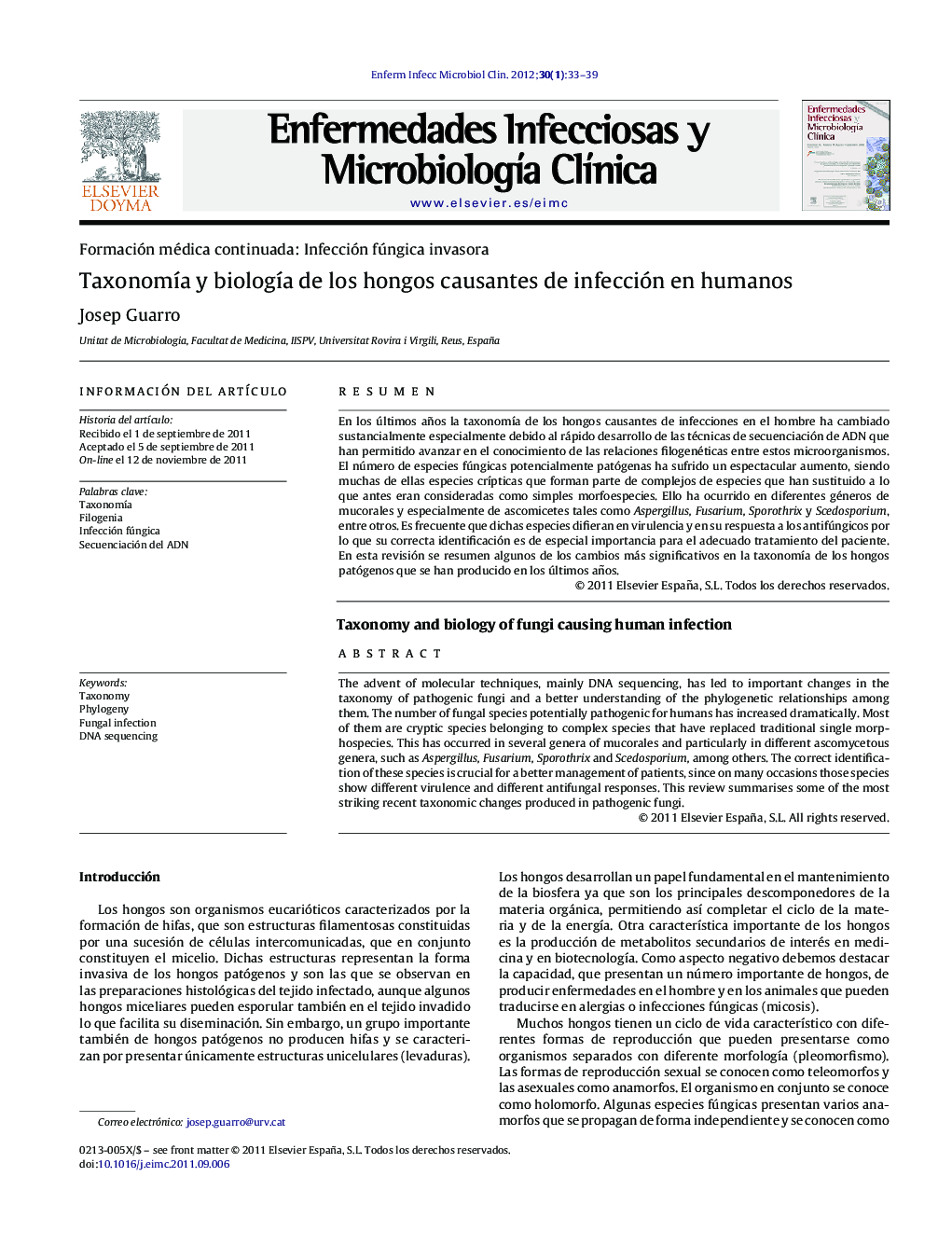| Article ID | Journal | Published Year | Pages | File Type |
|---|---|---|---|---|
| 3401543 | Enfermedades Infecciosas y Microbiología Clínica | 2012 | 7 Pages |
Abstract
The advent of molecular techniques, mainly DNA sequencing, has led to important changes in the taxonomy of pathogenic fungi and a better understanding of the phylogenetic relationships among them. The number of fungal species potentially pathogenic for humans has increased dramatically. Most of them are cryptic species belonging to complex species that have replaced traditional single morphospecies. This has occurred in several genera of mucorales and particularly in different ascomycetous genera, such as Aspergillus, Fusarium, Sporothrix and Scedosporium, among others. The correct identification of these species is crucial for a better management of patients, since on many occasions those species show different virulence and different antifungal responses. This review summarises some of the most striking recent taxonomic changes produced in pathogenic fungi.
Related Topics
Life Sciences
Immunology and Microbiology
Microbiology
Authors
Josep Guarro,
